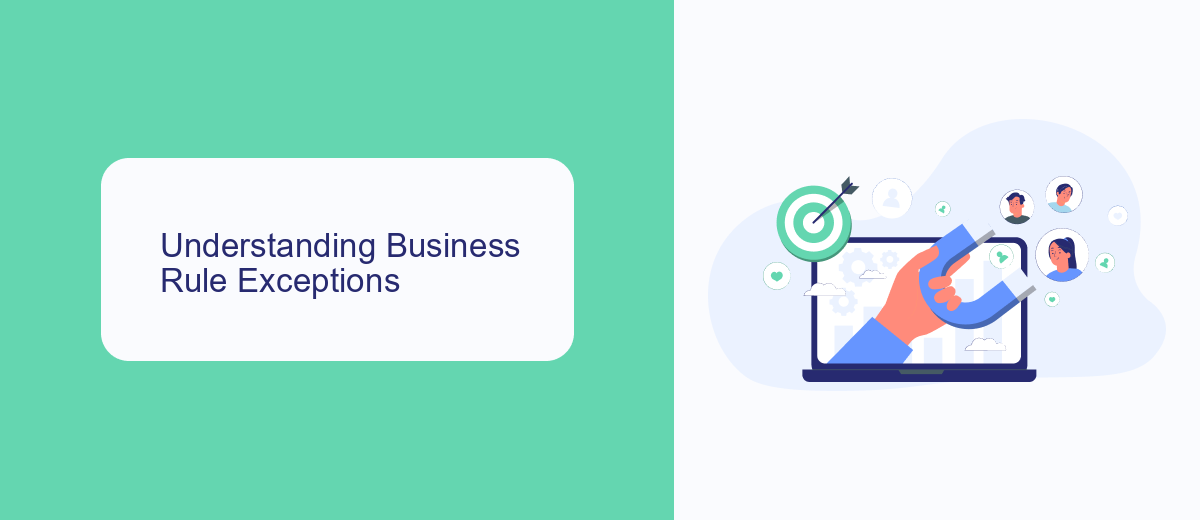In the realm of automation, handling exceptions effectively is crucial for smooth workflow execution. One key concept in UiPath, a leading robotic process automation tool, is the Business Rule Exception. This article delves into what a Business Rule Exception is, its significance, and how it can be utilized to ensure that automated processes adhere to specific business rules and requirements.
Introduction
In the realm of robotic process automation (RPA), UiPath stands out as a leading platform, offering a plethora of tools to streamline business processes. One crucial aspect of any automated workflow is handling exceptions, particularly business rule exceptions. These exceptions occur when a process fails to meet specific business criteria or rules, requiring special handling to ensure smooth operations.
- Definition of business rule exceptions
- Importance in automated workflows
- Common scenarios and examples
Understanding and managing business rule exceptions in UiPath is essential for creating robust and reliable automation solutions. By effectively handling these exceptions, businesses can maintain high levels of accuracy and efficiency. Additionally, integrating services like SaveMyLeads can further enhance automation by seamlessly connecting various applications and ensuring data consistency across platforms.
Understanding Business Rule Exceptions

Business Rule Exceptions in UiPath are specific types of exceptions that occur when a business rule is violated during the execution of a workflow. These exceptions are not the result of technical issues or system errors but rather stem from logical conditions defined by the business process. For example, if a purchase order exceeds a certain limit and requires additional approval, a Business Rule Exception can be triggered to handle this scenario appropriately within the automation framework.
Understanding and managing Business Rule Exceptions is crucial for ensuring that automated processes adhere to predefined business policies and regulations. Tools like SaveMyLeads can be integrated into UiPath workflows to enhance the handling of these exceptions by automatically routing them to the appropriate channels for resolution. This integration helps maintain seamless operations and ensures that any deviations from business rules are promptly addressed, thereby minimizing disruptions and maintaining compliance with business standards.
Best Practices for Handling Business Rule Exceptions

Handling business rule exceptions in UiPath is crucial for maintaining the integrity and efficiency of your automation processes. Proper management of these exceptions ensures that your workflows are resilient and can handle unexpected scenarios gracefully.
- Define Clear Business Rules: Ensure that business rules are well-defined and documented. This helps in identifying exceptions accurately.
- Use Try-Catch Blocks: Implement try-catch blocks to handle exceptions and ensure that your workflow can continue or fail gracefully.
- Log Exceptions: Maintain detailed logs of exceptions to facilitate troubleshooting and improve future processes.
- Notify Stakeholders: Set up notifications for stakeholders when exceptions occur. This can be automated using services like SaveMyLeads to integrate with your communication tools.
- Regularly Review and Update Rules: Business rules can evolve, so regularly review and update them to reflect current business needs.
By following these best practices, you can ensure that your UiPath automation is robust and capable of handling business rule exceptions effectively. This not only improves the reliability of your processes but also enhances overall operational efficiency.
Examples of Business Rule Exceptions in UiPath

Business Rule Exceptions in UiPath occur when a process encounters data or conditions that do not meet predefined business rules. These exceptions are not due to technical errors but rather to specific business logic that needs to be adhered to.
For instance, if a robot is processing invoices and encounters an invoice with a missing mandatory field, a Business Rule Exception is triggered. Similarly, if a customer order exceeds a predefined credit limit, the process should halt and flag the exception.
- Processing an invoice with missing mandatory fields
- Customer order exceeding the credit limit
- Invalid data formats in input files
- Duplicate entries detected during data processing
These exceptions help ensure that the automated processes adhere strictly to business requirements. Tools like SaveMyLeads can be integrated to streamline the handling of such exceptions by automating notifications and corrective actions, thus maintaining the integrity of the business process.
Conclusion
In conclusion, understanding and managing Business Rule Exceptions in UiPath is crucial for ensuring the robustness and reliability of automated processes. By effectively handling these exceptions, organizations can maintain the integrity of their workflows and ensure that business rules are consistently applied. This not only minimizes errors but also enhances overall process efficiency and accuracy.
Moreover, integrating tools like SaveMyLeads can further streamline the handling of Business Rule Exceptions. SaveMyLeads offers seamless integration capabilities, allowing businesses to automate the transfer of data between various platforms and systems. This ensures that exceptions are promptly addressed and relevant stakeholders are notified in real-time, thereby reducing downtime and improving response times. Ultimately, leveraging such integration services can significantly enhance the effectiveness of your UiPath automation solutions.
- Automate the work with leads from the Facebook advertising account
- Empower with integrations and instant transfer of leads
- Don't spend money on developers or integrators
- Save time by automating routine tasks
FAQ
What is a Business Rule Exception in UiPath?
When should I use a Business Rule Exception?
How do I implement a Business Rule Exception in UiPath?
Can Business Rule Exceptions be logged and monitored?
What tools can help in integrating Business Rule Exceptions with other systems?
What do you do with the data you get from Facebook lead forms? Do you send them to the manager, add them to mailing services, transfer them to the CRM system, use them to implement feedback? Automate all of these processes with the SaveMyLeads online connector. Create integrations so that new Facebook leads are automatically transferred to instant messengers, mailing services, task managers and other tools. Save yourself and your company's employees from routine work.

